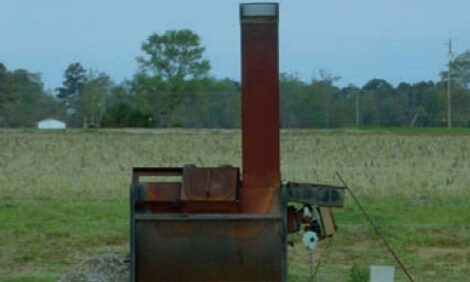



US Poultry Industry Manual - movement of turkey mortalities and litter
Dead turkey, litter and manure disposalPart of Series:
< Previous Article in Series Next Article in Series >
Editor's Note: The following content is an excerpt from Poultry Industry Manual: The Foreign Animal Disease Preparedness and Response Plan (FAD PReP)/National Animal Health Emergency Management System (NAHEMS) Guidelines which is designed to provide a framework for dealing with an animal health emergency in the United States. Additional content from the manual will be provided as an article series.
It is preferable to keep mortality on the farm. Dead bird disposal is regulated and in most poultry producing areas must be done within 24-48 hours. Options for on-farm disposal of dead birds include incineration, composting, or burial. Procedures must conform to air and water quality standards to prevent pollution, and dead birds need to be kept away from scavengers, pets, and other livestock (e.g. not feeding dead birds to pigs).
Incineration is the most costly disposal method, but it is also provides the highest level of biosecurity because all mortality is handled on site. Incinerators meeting air emission requirements are expensive, and fuel costs continue to rise making incineration costly, especially when large birds are involved. Different states may have different regulations regarding air quality emissions that can affect use of certain incineration techniques. Burn rates for typical incinerators are 100-200 lbs per hour.

Composting can be highly effective, but requires careful management. If done properly, the resulting compost makes a good soil amendment for crops and pasture. In some States, composted carcasses cannot be spread on pastures where cattle will graze because of the possibility of botulism. Two cubic feet (56.5 cm3) of primary and secondary composting space is needed for each pound (0.45 kg) of carcass. Temperatures need to be monitored to ensure that composting is occurring. They should reach 130-150°F (54-66°C) within 24-48 hours of loading the composter.
Composting temperatures established by the Environmental Protection Agency for pathogen reduction are 128°F (53.3°C) for 5 days, 131°F (55°C) for 2.6 days, or 158°F (70°C) for 30 minutes. Although high temperatures, above 150°F (65.5°C) only require a short time and are highly effective in controlling pathogens, they are not recommended, as aerobic organisms necessary for composting are also killed. On-site composting provides the best biosecurity, but some companies provide central composting facilities.
Burial, or use of disposal pits, tends to be least costly, but cannot be used in many areas because of potential contamination of ground water and regulations. Ground water contamination can be a source of disease for poultry and other animals. It also is common for scavengers to dig up buried carcasses and spread infectious agents around the farm or to adjacent farms. Other methods of on-farm dead bird disposal, including refrigeration/freezing of mortality for disposal after the flock is processed, extrusion, and lactic acid fermentation, are being explored but have not been widely adopted.
Rendering is a method of dead bird disposal in which mortality is picked up on a scheduled basis, delivered to a common pick-up site, or delivered directly to the rendering plant where carcasses are processed. It is only available in limited areas. Traveling among farms to a communal dead bird drop off-site or to the rendering plant increases the risk of disease spread. In addition, there are concerns about feeding animal protein back to animals. For these reasons, rendering is currently used less frequently as a method of dead bird disposal than it was previously.
2.5.2 Litter and Manure
Turkeys produce slightly over a pound of manure per pound of feed, which is approximately 75% moisture. Manure mixes with litter through activity of the birds, but tends to be concentrated along feed lines and around drinkers. As it dries, it forms a hard layer on the surface referred to as “cake”. In addition to manure, litter contains shavings or other organic material on which the birds were started, feathers, and spilled feed. Litter in finishing houses contains manure from several flocks and is rich in nutrients, especially nitrogen that has value as fertilizer. However, nitrogen is depleted from litter as it is stored and composted, reducing its value as fertilizer.
Finishing houses are usually cleaned out annually and the litter spread onto fields. Contract arrangements are necessary if the litter is to be put onto land that is not owned by the grower and applications are strictly regulated. Land application requires knowing the volume of litter, level of nutrients in the litter, nutrient requirements of the crop(s) to be fertilized, and existing nutrients in the soil.
Litter must be applied in a manner that will not result in contamination of waterways from runoff and the crop(s) will need supplemental fertilizer not provided from the litter. Excess phosphorus and buildup of heavy metals (zinc, copper, arsenic) used in production of turkeys and concentrated from multiple flocks are concerns for land application of litter. Most litter is applied to crop land, but there are efforts to convert litter into energy either on-farm or communally. It is a poor practice to apply litter on fields immediately adjacent to other poultry operations, as beetles in the litter migrate to nearby houses and some infectious agents can be spread in the dust generated when the litter is applied.
Litter from brooder houses has less nitrogen since it contains manure from only a single flock. It has limited value as a fertilizer and is more expensive to apply to land compared to finishing litter. It can be transferred to finishing houses to replace litter that was removed or supplement existing litter, or it can be used for composting mortality as it has a high carbon:nitrogen ratio.
Reference: "USDA APHIS | FAD Prep Industry Manuals". Aphis.Usda.Gov. 2013. https://www.aphis.usda.gov/aph...
The manual was produced by the Center for Food Security and Public Health, Iowa State University of Science and Technology, College of Veterinary Medicine, in collaboration with the USDA Animal and Plant Health Inspection Service through a cooperative agreement.














